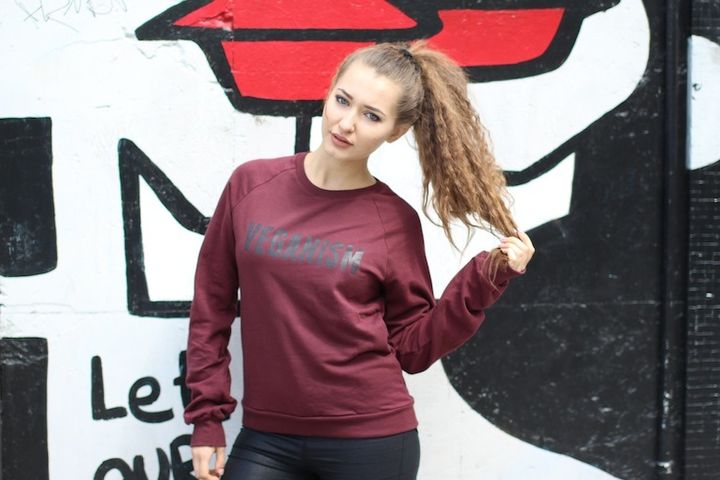
Most people are aware of the fact that vegans, aside from giving up animal-derived foods, also say no to fur and leather. But not many know of the cruel aspects of a material that is still largely considered a winter staple: wool.
Lambs are just a few weeks old when holes are punched in their ears, their tails are cut off and the males are castrated, often without any pain relief. In the UK, 15% of lambs do not survive infancy due to exposure or starvation and diseases, among other causes.
Sheep don’t “need” to be shorn
A popular myth about wool is “sheep need to be shorn”. The reality is that sheep are bred to produce as much wool as is needed for the industry, which by far exceeds their natural needs. In their natural state, sheep would produce just enough wool to protect them from the elements and naturally shed it in the summer – but in the industry, the “need” for shearing arises from the sheep being bred to have too much wool in the first place.
The cruelty of mulesing
To prevent a condition called flystrike, which involves (brace yourself for some disgusting info ahead) flies laying eggs in the folds of sheep’s skin caused by the excess wool, farmers in Australia – one of the world’s leading wool-producing countries – cut off chunks of sheep’s skin in a practice called mulesing. Wool producers in Britain and Italy have called for painkillers to be compulsory after mulesing, which was rejected by the wool industry.
Suffering guaranteed
Even if many retailers have banned the wool of mulesed sheep, wool still poses ethical dilemmas. PETA and its international affiliates have done undercover investigations into over 30 shearing facilities on three continents – every time documenting abuse such as sheep being kicked, punched and beaten, plus left with bloody wounds and cuts after shearing. Workers commonly get paid by the volume, not by the hour, so it’s in their interest to obtain as much wool as possible in the shortest amount of time, causing them to work quickly and injure sheep. And lastly, the argument that “no animal is killed for wool” doesn’t quite hold up: when a sheep is deemed no longer fit for wool production, she is sent to slaughter. Celebrities such as Joaquin Phoenix and Alicia Silverstone have spoken out against the use of wool.
The humane options
So now that we know this, what should we wear instead? Natural fibres that are kinder to the environment than synthetic and more humane than wool, do exist. In fact, some of the most eco-friendly materials are vegan.
Cotton
One of the most commonly used textiles, cotton has warming properties and can be very durable. Organic cotton is harvested without the use of pesticides, GMOs or harsh chemicals, and is biodegradable. Recycled and reclaimed cotton is also a hit with many sustainable fashion brands.
Linen
This natural fibre requires no chemicals at all for growth and transformation. It’s also very strong and durable, and kinder to sensitive skin. Linen is perhaps not the warmest fabric you will ever wear, so maybe save this one for those in-between days that aren’t too hot or too cold. It also wrinkles quite easily, so irons at the ready!
Hemp
One of the most sustainable fabrics in the world, hemp is used similarly to cotton and commonly appears in blended fabrics. It’s resistant, very strong and not as water-intensive as many other plant-based natural fabrics. Hemp is also a natural pest repellent, so no pesticides are needed in its production. In short, hemp is a winner, and blended fabrics often make it look more polished than the more “earthy” hippie hemp of the past.
Tencel/Lyocell
One of the more interesting innovations of sustainable fashion is Tencel, a regenerated fabric made from wood cellulose and produced without toxic chemicals in a so-called “closed-loop process”, in which the solvents used are recycled with a recovery rate of 99.5%. It’s a very versatile fabric and can be used in everything from dresses to knitwear and trousers.
Recycled fabrics
New York-based Joshua Katcher is leading the way with his menswear brand Brave GentleMan, which uses an Ecolabel-certified fair-labour mill in Brazil to break down and re-spin the recycled cottons and polyesters used for their “future-wool” fabric (which is entirely wool-free). These materials are diverted from the waste stream and colour-separated for a dye-free process. Upcycled materials are an eco-friendly way to give old textiles new life – without harming animals.
Other exciting innovations in the wool-free fashion camp include soybean fibre, bamboo and seaweed fabric. There is currently simply no need to use animals for clothing – and the future of fashion is guaranteed to be even more vegan-friendly.
